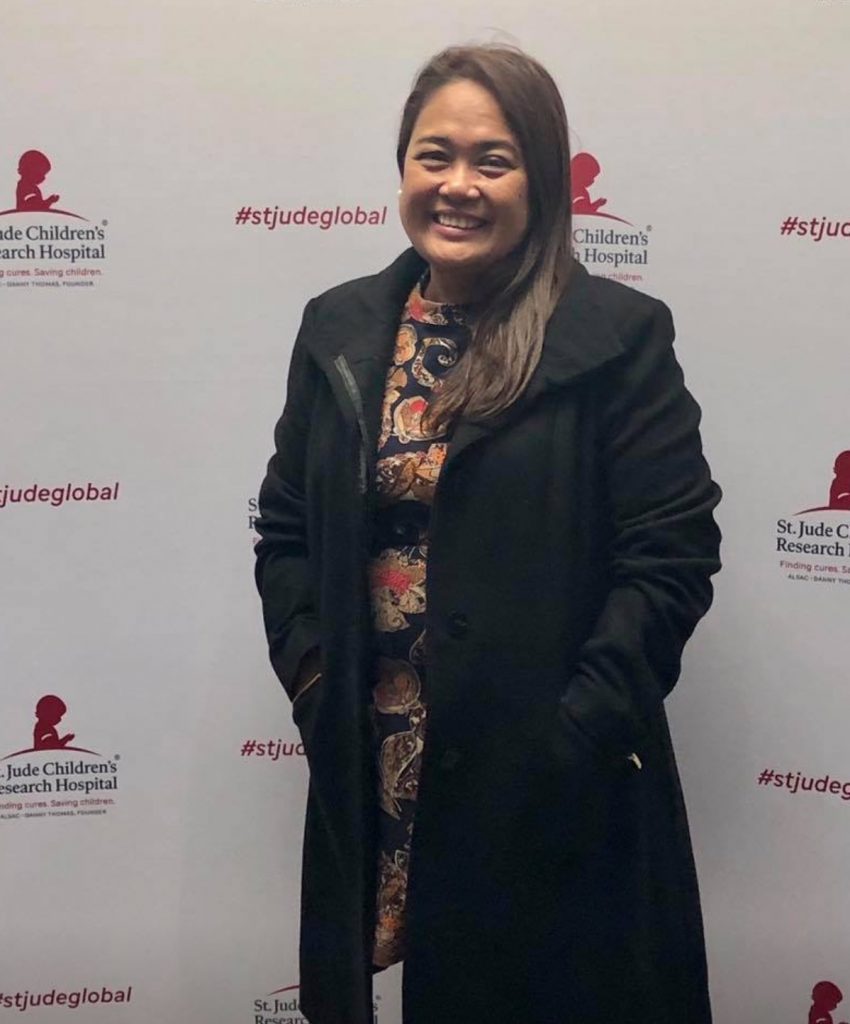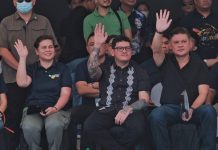Before Davao City came into existence, there was already Datu Bago who, according to some Spanish documents, was a villain.
Datu Bago was considered as such because he was against of having the Davao Gulf to be controlled by the foreign invaders. He headed a group of local chieftains who were “united in opposing Spanish land grabbing.” It is said that the group “kept the Spaniards at bay for a long time by launching attacks against Spanish-controlled settlements on the Pacific Coast.”
Datu Bago reportedly “held his settlement at the banks of Davao River (once called Tagloc River by the Bagobos).” His reign ended in 1848 when Don Jose Oyanguren defeated him. The latter establish a settlement in an area of mangrove swamps that is now Bolton Riverside.
To recognize his bravery and in his honor, the Davao City government – under the leadership of Mayor Elias B. Lopez – launched the Datu Bago Award in 1969. It is touted to be the highest recognition bestowed on a resident “who has contributed to the development of the City of Davao with exemplary competence and dedication and who best serves as a model of excellence and as an inspiration to the residents of Davao.”
Curiously enough, this author had personally meet some of them even before they were given the award. Let’s Start with Amalia Bandiola-Cabusao, known to her friends as “Amy,” the editor-in-chief of The Mindanao Times, the oldest newspaper in the island.

The award-giving body bestowed this fiery journalist (whom I had a chance of getting better when we were together on trip in the Visayas along with other Davao scribes) the Datu Bago award in 2017 for “promoting press freedom and building capacities of campus and community journalists.”
The citation reads: “Not content with just writing and publishing community stories, she dedicates her life to building the capacities of young people, especially women and girls and indigenous youth, in communicating and story-telling.”
In addition, Amy was recognized for organizing “regular summer workshops in journalism for local and international writers and promotes peace and conflict sensitivity in reporting Mindanao.”
The recognition is not Amy’s first not it will be her last. Four years ago, she was chosen to be the recipient of the journalism’s Ninoy and Cory Aquino Fellowship for Professional Development “for her dedication to upholding press freedom and journalistic ethics, and for providing valuable training opportunities to promising Filipino journalists.”

Also awarded in 2017 was visual artist Rey Mudjahid Ponce Millan – more popularly known as “Kublai” – who I had met when I accompanied Marc Nelson and Dyan Castillejo when the Sports Unlimited hosts visited the Agong House in Kapatagan, Digos City, Davao del Sur.
A “prolific artist who infuses his works of art with humanity and indigenous culture” was how the Datu Bago Awardees Organization, Inc. described Kublai. As for his creations, they are “deeply rooted in the social context of Mindanao’s grassroots communities,” the organization pointed out.
On why he was given the Datu Bago Award, the conferring body explained: “He is Davao’s favorite culture and arts ambassador as his many art works can be seen all over Davao City and Mindanao. His unique sculptures and art installations have become cultural landmarks and enjoyed by Davao residents and visitors alike.”
If you have visited the People’s Park, you won’t miss those creative “statues” scattered all over the place. And if you happen to be at the Davao International Airport, the huge “durian” fruit sculpture can’t simply be ignored. They are just some of Kublai’s awesome creations.
“His huge sculptural pieces have become landmarks in various cities and provinces in Mindanao,” MindaNews stated.
The Davao-based news agency also stated: “Kublai also works with disadvantaged children – children in conflict with the law, orphans, abused children, and indigenous children – through free art workshops and fundraising exhibits for children’s artworks.
“Kublai has showcased Davao City’s art and culture in the national and global stage through his creations. He is the first Dabawenyo and Filipino artist to create and display a life-size Nativity sculpture at the St. Peter’s Square in the Vatican, Italy for the entire Christmas season in 2010.”
But the most number of Datu Bago awardees I met where those awarded in 2015: Darrell Dean Blatchley, Dr. Mae Concepcion J. Dolendo, and Randy H. Halasan (who, before the award was already a recipient of Asia’s Nobel Prize, the Ramon Magsaysay Award).

Uncle D – as Blatchley is known for his persona that used to grace the local television station – is actually an American but can speak Bisaya well. “It’s a very high honor,” Blatchley says of Datu Bago Award. “Even if I was not given the award, I will still be doing what I do. But it helps when people and organization recognize the value of what you have done and that it was and is for the greater good. All the heartaches are worth it.”
The award-giving body recognized Blatchley “for his work as bone collector through his D’Bone Collector Museum.” D’Bone Collector Museum has become a tourist destination and education hub of Davao City.
“A group that conduct consultation for museums in Southeast Asia told us that our collection is one of the most extensive they have seen in the region,” says the American has spent almost half of his life in the country.
Throughout history, bones are the remembrance of a life’s existence. “For me, bones are the ultimate learning tool,” Blatchley says. “So much can still be learned upon death. It tells you the life of the animal; whether it had a good life (healthy bones) or a hard life (cracked and deformed bones).”

Just like Blatchley, Dr. Dolendo is not from Davao. She’s from Iloilo but came to Davao because her husband, Engr. Gabriel dela Cruz Dolendo, is from this city. The two met during the national conference convened by YMCA Rizal Youth Leadership Training Institute.
Dr. Dolendo was cited for “her outstanding work in pediatric oncology.” The citation added that she has placed Davao City in the world map of pediatric oncology “due to her international linkages.”
“I am deeply honored and truly humbled,” she says of the recognition when interviewed by this author. “It means I have contributed something significant to Davao City, my home. It means a bigger voice, hope and inspiration for the children I advocate for and the people who tirelessly work for these children.”
Dr. Dolendo is the driving force behind the House of Hope, which is located inside the Southern Philippines Medical Center (SPMC). She heads the Children’s Cancer and Blood Diseases Unit.
On why she founded House of Hope, she says, “Treatment for child cancer is long term and requires repeated visits to the hospital. The children and their families need a place to stay which is clean, wholesome and conveniently near the hospital. House of Hope served as a transient home for these patients for the duration of their outpatient treatment.”
Through the years, DCCFI has successfully realized its vision-mission. “We are trying to further strengthen its capacity so that it can respond to the increasing number of patients it serves and continue to advocate for legislation that will promote sustainability of support for child cancer,” she says.

“I never expected it,” says Randy H. Halasan, who is recognized for “his dedication as a teacher assigned in the hinterland of Marilog District to teach at Pegalongan Elementary School.”
That was the same reply he answered when asked about winning the prestigious Ramon Magsaysay Award in 2014. He was given the Nobel Prize of Asia for “his purposeful dedication in nurturing his Matigsalug students and their community to transform their lives through quality education and sustainable livelihoods, doing so in ways that respect their uniqueness and preserve their integrity as indigenous peoples in a modernizing Philippines.”
In an interview we did for a national magazine, one of the most memorable statements he said was this: “Rich or poor, there’s no boundary or limitations in helping our fellowmen especially the poor. Nobody gets rich from the teaching profession, but a teacher like me gets rich from sharing knowledge, values, and positive attitudes to the community.”
Here’s what the Ramon Magsaysay Award Foundation (RMAF) said in its citation: “It is a truism that it takes a village to raise a child. But it seems equally true that it takes just one person to launch this collective process of education. In the Philippines, where a public school system has been in place for over a century, many communities remain either unserved or underserved.
During our exclusive interview, he bared some facets of his life. On why he accepted to teach in Pegalongan, he replied, “I have no choice. I have to use my profession or I may be stuck working in other fields which I am not fitted.”
Fitted or not, Halasan has now done more than just teaching the children. He even helps the people living in Matigsalug to address food security. “If I only focus on education, nothing will happen; the children will continue to go hungry,” he was quoted as saying.
Last year, Halasan was appointed by President Rodrigo R. Duterte as a commissioner of Presidential Commission for the Urban Poor






